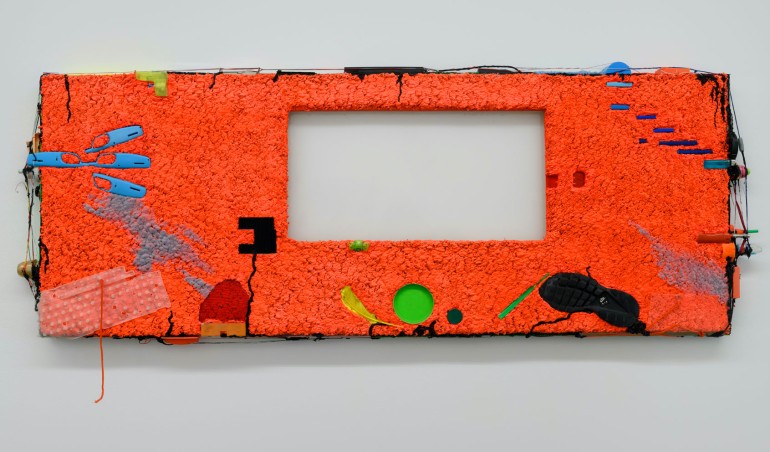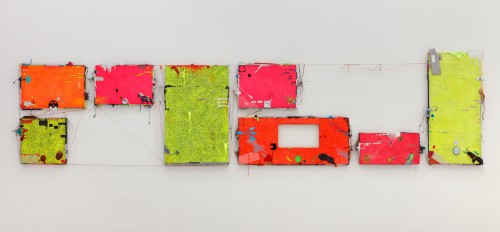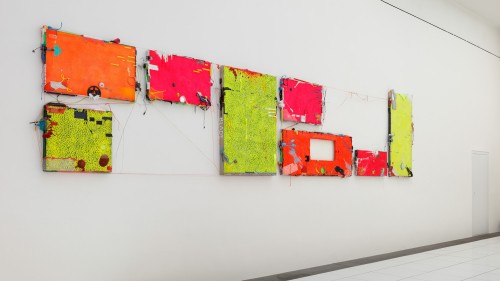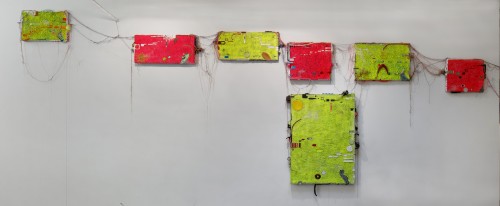Connected installations, 2000 – 2024, mixed media.
A way of displaying Sci-fi panels.
The panels, which are essentially empty, refer to the surrounding panels through ergonomic elements on the edges.
The paintings painted in the interiors of famous sci-fi films try to prove that hanging paintings may not disappear from architecture in the future and that the architects of sci-fi interiors may not be right when they displace classic paintings from films. At the same time, it is about using this strategy to come up with innovative aesthetic procedures.
The series of paintings entitled Paintings of the Future began to emerge in 2000 as a reaction to the opinions of some hardcore Neo-Modernists (Post-Conceptualists) that painting would disappear in the future because it was too conservative, exhausted and prone to commercialism. This extreme view, which was expressed by radical Modernists many times during the 20th century, inspired me to create my first painting for a science fiction film. I was under the impression that the makers of this genre refused to use the easel painting in film interiors. They were convinced that in the future architecture would become more of a machine interacting with humans and that art would be displaced by design.
A painting on a spaceship seems out of place. So I decided to start painting images for the interiors of science fiction films of the future to test whether it might look satisfactory. I started with the 1982 film Blade Runner. I found a giant black glass pyramid in a bleak city setting. It was a perfect representation of the architecture of the future. Inside one of the vast and austere interiors, a giant glass window could be controlled by voice. It could be darkened or lightened. It occurred to me that a traditional easel painting would be a wonderful addition to such a cold and gloomy space, lightening up the hall and bringing a positive playful energy to it. Moreover, I was tempted to adapt to the aesthetics of the film and develop a new visual quality.
In my Blade Runner painting I was inspired by the sun, which was rather absent in that film. I used a carpet as a base for the painting which I prepared by applying dark paint to its reverse side. In the front I applied thick reflective paint to the fur, through which the dark pigment in the background accentuated the illusion of darkness. On the other hand, in the front there rippled and shone sunbursts of reflective yellow fur. I did not use any other motif in the center of the painting in order to let the structure of the glow stand out, so I worked with the edge. I perceived the whole image as a panel whose individual elements and details should resemble an archetypal electronic device that could be controlled by a human being. I was inspired by monitors, computer keyboards, game consoles, joysticks… In this context, I was also interested in the ergonomics of the painting, input ports and keyboards, connectors and cables that would eventually allow the painting to be connected in series.
Connecting boards through ergonomic elements
Connecting boards through ergonomic elements






